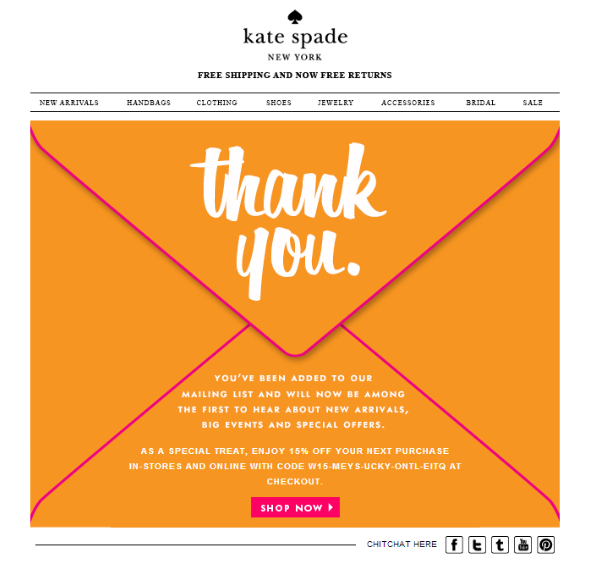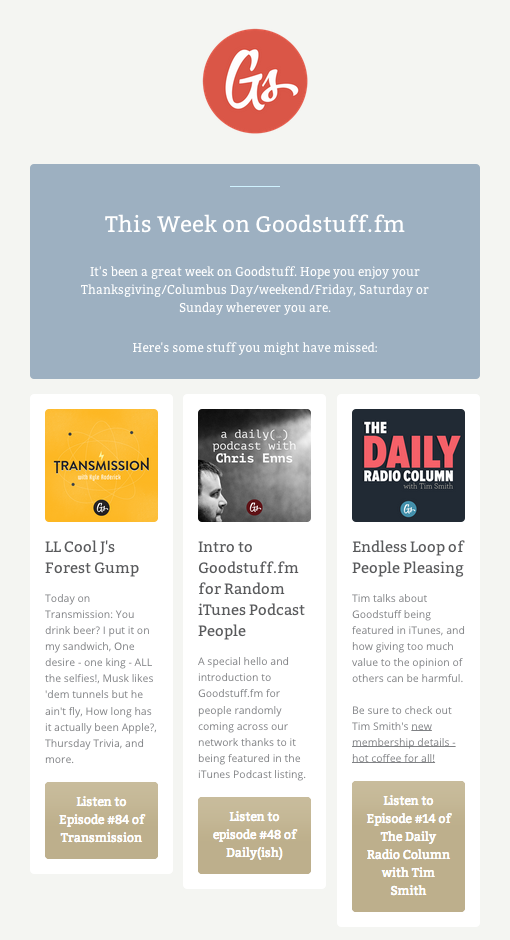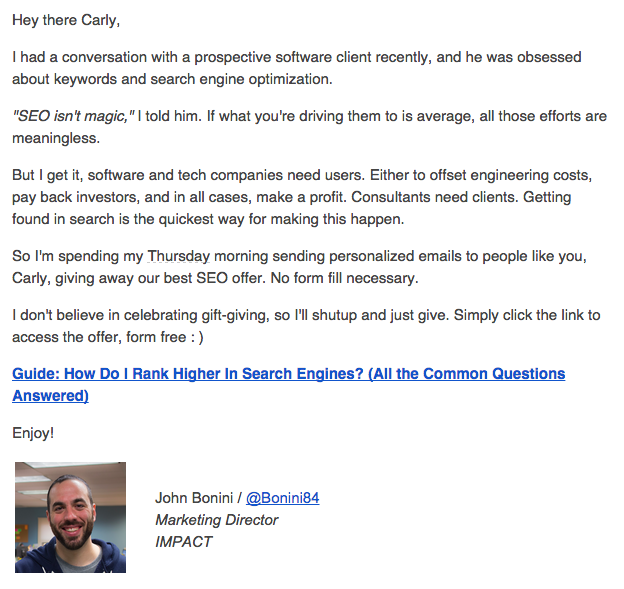Topics:
Marketing StrategySubscribe now and get the latest podcast releases delivered straight to your inbox.
 We've all had a bad experience at a restaurant.
We've all had a bad experience at a restaurant.
(It happens.)
However, while most of us are willing to forgive soggy fries or a flavorless steak the first time, we rarely tolerate repeat offenders.
Aware that people value first impressions, each email you send to your subscribers should be an email that you'd want to receive yourself.
The more soggy, flavorless emails you send, the less likely your subscribers will be to remain subscribed.
And much like that poorly seasoned steak, your emails will be destined for the trash can.
If you want to survive inbox congestion, you have to put up a good fight. So before you send that next email, consider the following.
Avoid asking every time
When it comes to email, the cardinal rule is to give more than you take.
According to Gary Vaynerchuk, "Your story needs to move people’s spirits and build their goodwill, so that when you finally do ask them to buy from you, they feel like you’ve given them so much it would be almost rude to refuse.”
Calling upon his book, Jab, Jab, Jab, Right Hook, Vaynerchuk argues that you don't win a fight with a right hook and a right hook only. A real knock out requires a series of strategic jabs.
Authentic relationship building happens when you commit to reciprocating over soliciting. Rather than treat email as an avenue to ask, use it to give away something.
Tell your story. Offer them something. Turn your successes into actionable tips.
Once you lay the foundation for a relationship that your subscribers can see value in, then ask.
Send something like this:
 As soon as you arrive on Kate Spade's mailing list, you're greeted with a gift.
As soon as you arrive on Kate Spade's mailing list, you're greeted with a gift.
15% off your next purchase (yay!)
They also stress that you'll be "the first to hear about news arrivals, big events, and special offers", with the goal of making you feel well, special, right off the bat.
The lesson to be learned? Don't dive into an ask.
To become valuable you have to give away value.
Cut the copy
Let's set the record straight. Writing verbosely doesn't translate to intelligence.
Considering the average reading level in the United States is at the 8th-9th grade standard, a long-winded approach could alienate readers.
Writing memorably requires you to exercise brevity.
Write down what you want to say, and then rewrite it until it's as clear and concise as possible.
Get rid of needless words like "very", "really", and "incredibly."
As you write, keep in mind that every second wasted on something that doesn't need to be there puts your email at risk.
Send something like this:

Quick and to the point.
This email from Goodstuff.fm doesn't mess around with a bunch of unnecessary words.
For an email like this, all it takes is 3 sentences for them to cut to the chase and get you to the content. Time well spent.
Be personable
Email aren't meant to mirror the formal tone you'd take in a double-spaced, five paragraph college research paper.
While this isn't an excuse to litter your writing with "ums", "uhs", and "LOLs", it's okay to write like you're writing for another human on the other end of the line. In fact, it's preferred.
Try these three tips for transforming formal content into something people actually want to read:
1) It's okay to use contractions
Formal - We are launching a new website and it is going to be awesome.
Conversational - We're launching a new website and it's going to be awesome.
2) You don't have to use 10-dollar words
Formal - I think their new website is Supercalifragilisticexpialidocious.
Conversational - I think their new website is awesome.
(Okay, so that one was a little exaggerated, but you get the point.)
3) Practice writing in an active voice
Formal - A new website was created by them (passive.)
Conversational - They created a new website (active.)
Send something like this:

"It is the new year. But do not get engrossed in erratic resolutions..."
Less effective, right?
By peppering in things like "scaling Mount Everest on a unicycle" and "win swag", Swapskis ensures that their content contains a sense of entertainment.
Essentially, this approach makes it easy for you to want to read the next line (and the line after that, and the line after that.)
Speak to their needs
When writing email copy, keep in mind that your job is to know your audience better than your competitors.
Email copy that speaks directly to their needs will be much harder to ignore than a generalized blast with no context.
This means understanding what they want to hear, how they want to hear it, and when they want to hear it.
If you know they are worried about proving the ROI of inbound marketing to their boss, provide them with a resource that helps them do just that.
Send something like this:

What John does really well here is to use a story to create a familiar feeling that other prospects (like the one he mentioned) are experiencing.
By tailoring the content to their specific needs (and ensuring his understanding) he lays a very personal foundation that invites follow up.
Not to mention, he's giving away the content for free.
Go ahead. Name me off someone who doesn't love the word free...


Order Your Copy of Marcus Sheridan's New Book — Endless Customers!

